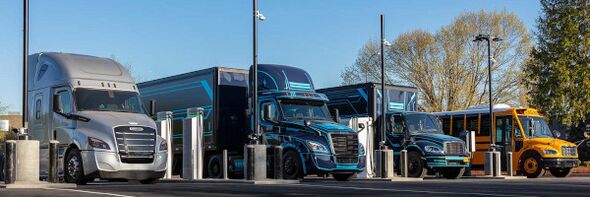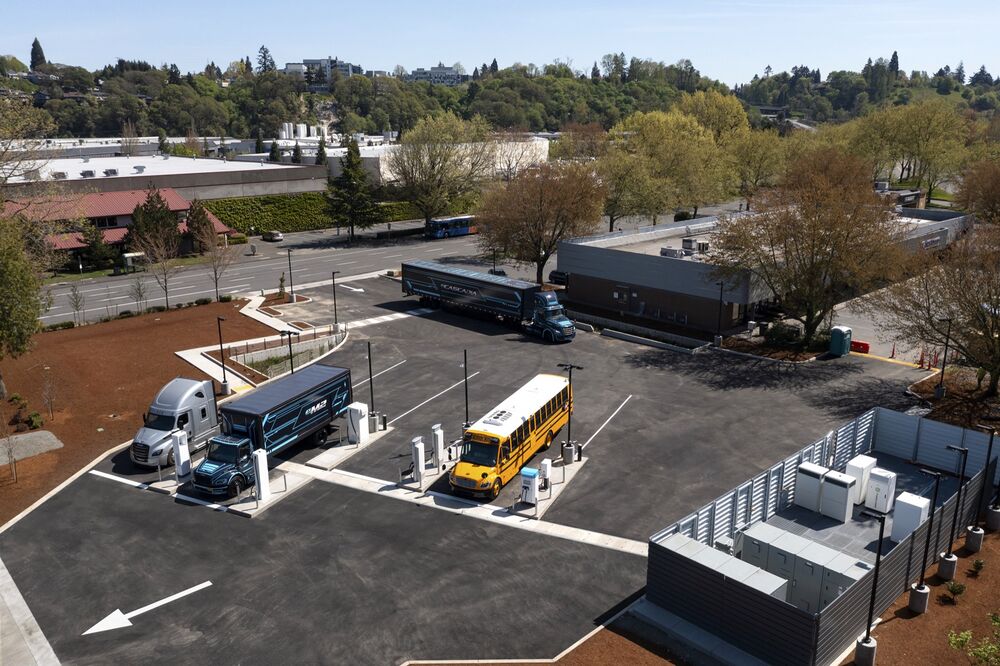Electric Island: Difference between revisions
No edit summary |
No edit summary |
||
| Line 7: | Line 7: | ||
|status=Launched | |status=Launched | ||
|sector=Transportation, Utility | |sector=Transportation, Utility | ||
|chapter=Electric Vehicle Charging Infrastructure | |||
|summary=Electric Island is located across the street from DTNA headquarters, less than one mile from I-5, and represents the first location specifically designed for medium- and heavy-duty trucks aligned to the blueprint of the West Coast Clean Transit Corridor Initiative (WCCTCI). WCCTCI’s collaboration between nine electric utilities and two government agencies yielded a strategic plan in 2020 to electrify 1,300 miles of I-5 across the three West Coast states to provide publicly available charging for freight and delivery trucks. | |summary=Electric Island is located across the street from DTNA headquarters, less than one mile from I-5, and represents the first location specifically designed for medium- and heavy-duty trucks aligned to the blueprint of the West Coast Clean Transit Corridor Initiative (WCCTCI). WCCTCI’s collaboration between nine electric utilities and two government agencies yielded a strategic plan in 2020 to electrify 1,300 miles of I-5 across the three West Coast states to provide publicly available charging for freight and delivery trucks. | ||
}} | }} | ||
Latest revision as of 22:49, January 24, 2023
| Electric Island | |
 Electric Island | |
| Team Organizations | Daimler Portland General Electric Black and Veatch |
| Point of Contact | Isaac Barrow Fred Ligouri Paul Stith |
| Participating Municipalities | Portland OR |
| Sectors | Transportation Utility |
| Initiative | |
| Status | Launched |
| Last Updated | December 5, 2025 |
Summary
Electric Island is located across the street from DTNA headquarters, less than one mile from I-5, and represents the first location specifically designed for medium- and heavy-duty trucks aligned to the blueprint of the West Coast Clean Transit Corridor Initiative (WCCTCI). WCCTCI’s collaboration between nine electric utilities and two government agencies yielded a strategic plan in 2020 to electrify 1,300 miles of I-5 across the three West Coast states to provide publicly available charging for freight and delivery trucks.
The site is designed to keep Electric Island future-proof, allowing the chargers of today to be replaced with new charger technologies of the future, including the planned 1+ megawatt chargers, when they are released. Additional plans for future on-site energy storage, solar power generation, and a product and technology showcase building remain under development.
